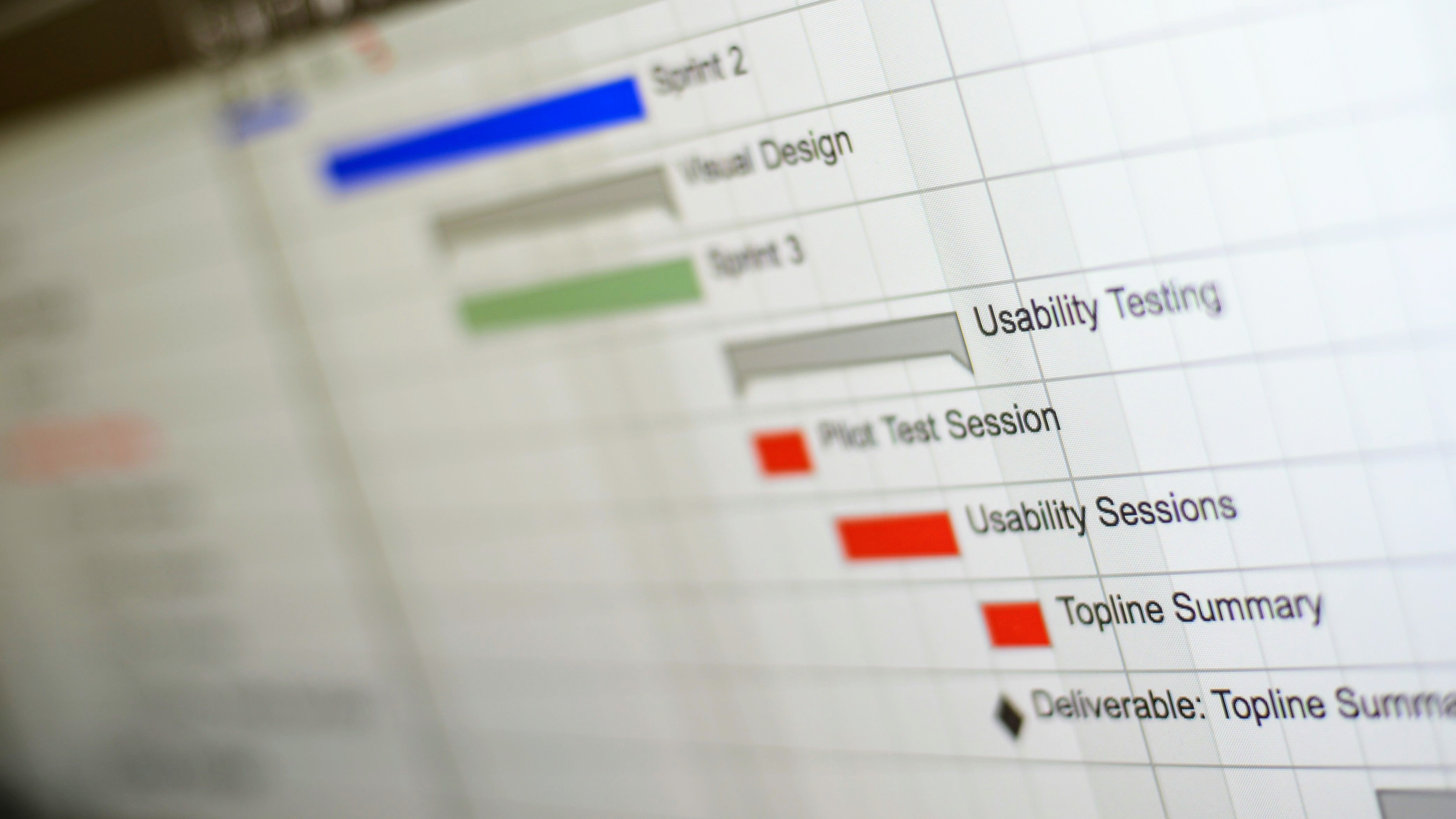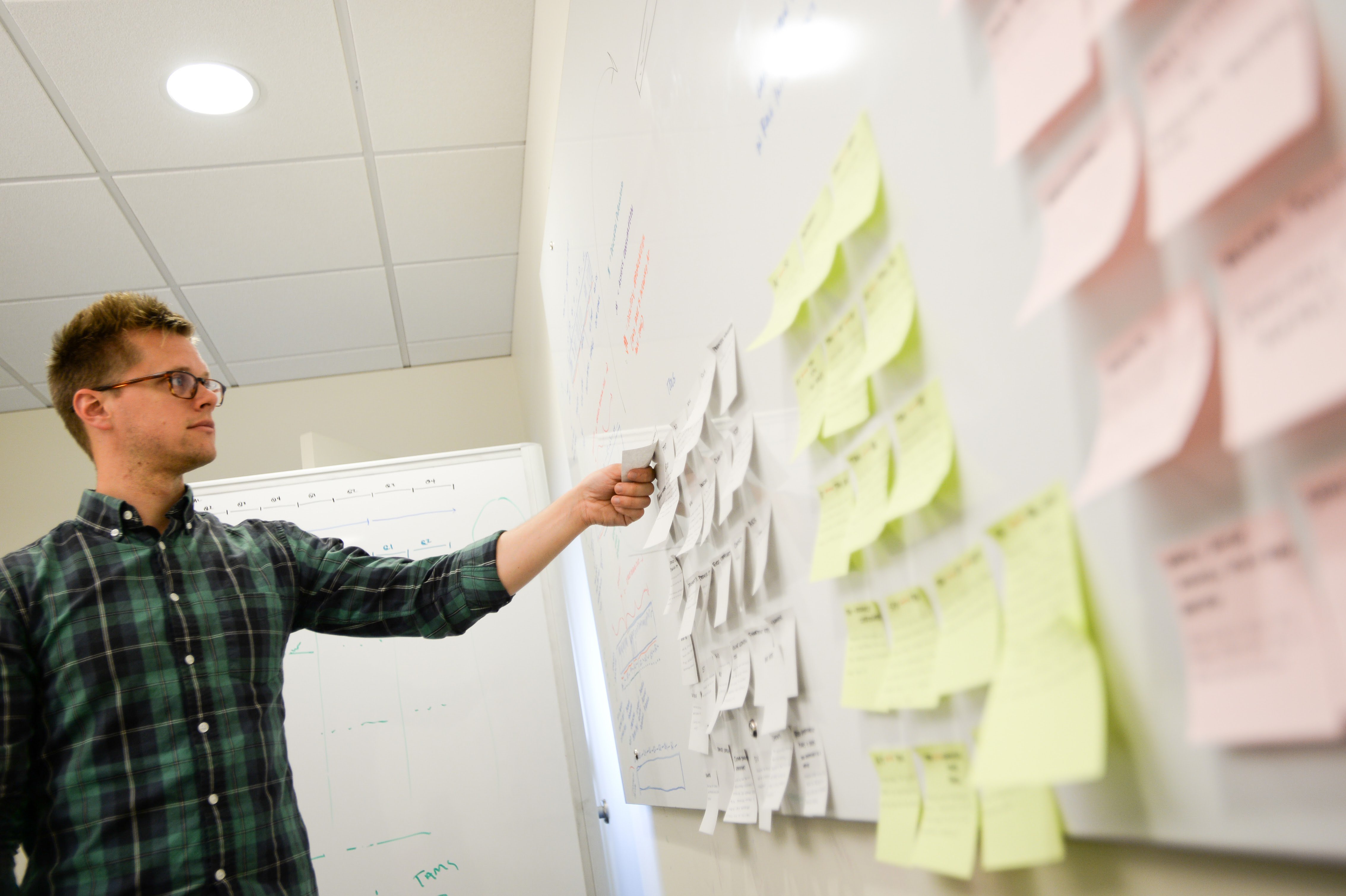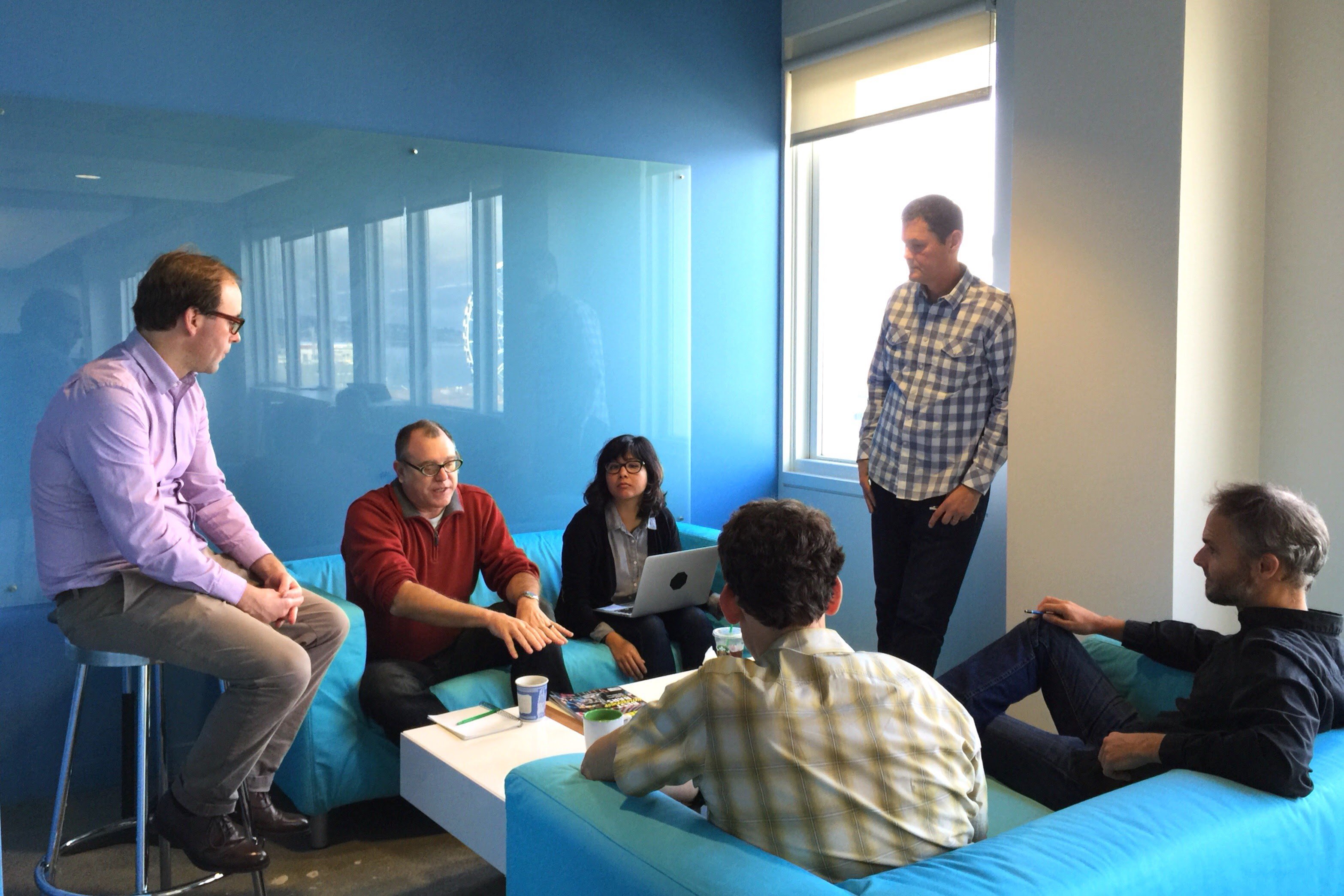
By
Irene Barber
User experience (UX) research serves as the vital foundation of any project, adding context and insight to the design process, but it often suffers in an Agile framework.
It is tricky to insert traditional user-centered design methodologies in general into incremental, development-focused sprints. This is curious as Agile presents as an alternative to traditional waterfall phasing by blending and incorporating those very phases — research, design, development, and testing — into every iterative sprint.
Research is the backbone of both design and business decisions, and neglecting it in the face of time constraints creates inefficiencies for development. Here are three tips for embracing the constraints and keeping UX research as a fundamental part of Agile.

Tip #1: Take advantage of “sprint 0”
“Sprint 0,” or the period of time before the first sprint that delivers real progress, gives the development team time to prep and set up a basic framework to complete future work efficiently. Similarly, this is a time when initial discovery is taking place for the UX team, allowing design to simultaneously progress with, if not be slightly ahead of, the development team come Sprint 1. It is also an appropriate time to plan for how UX research techniques will be interlaced into each future sprint.
In Agile, discovery is an ongoing activity spanning the entire project — not a one-off phase at the beginning. Prepare a handful of research activities using the optimal research methods to work well in a short time frame and can be taken advantage of at any point throughout the project. In a recent project here at Blink, we used three research activities regularly (below in Tip #2), conducting the one that best fits the needs of that particular sprint.
Recruit participants upfront to save time and execute research activities quickly. This is easier for enterprise and internal team UX projects, as a motivated and willing user base already exists. It can be accomplished with consumer-facing projects by creating an umbrella user profile ahead of knowing what will actually get tested. The user profile should be broad enough to work for any aspect of the project and allow for easy and quick recruiting to take place in advance of each sprint.
Tip #2: Adjust activities and work with what you’ve got
When it comes to research methods it is important to be flexible but still adhere to best practices. In a Nielsen Norman Group article on When to Use Which User-Experience Research Methods, Christian Rohrer presents a framework for choosing the right user research method at the right time. He also points out the importance of choosing a research methodology that best fits the objective of the given product development phase. Rohrer concludes with, “While many user-experience research methods have their roots in scientific practice, their aims are not purely scientific and still need to be adjusted to meet stakeholder needs. This is why the characterizations of the methods here are meant as general guidelines, rather than rigid classifications.”
“[A]djusted to meet stakeholder needs” is the fitting takeaway for UX research in an Agile setting. Both designers may need to change their approach quickly, depending on the requests of stakeholders. Researchers may need to tweak types of research and feedback methodologies to find the most applicable information.
In Agile, all design phases are happening concurrently, iteratively, and quickly. The need to conduct research may be unknown until the day before. In these circumstances, it is important to remember the gal of UX research — to glean insights, to inform design — and work with what you’ve got while keeping sound research practices in mind.
Here are three adjusted user research methods Blink recently used within the Agile time crunch:
1. User interviews
In traditional user interviews, participants meet one-on-one with a researcher to discuss in-depth any number of planned topics. A note-taker may also be present in the room, and sessions are usually taped (with permission) for further analysis. To expedite the “finding to implementation” process, we encouraged stakeholders and developers to observe the interviews in real time using a web conferencing service as we were conducting user research. The observing team is mostly there to listen and learn but can message clarifying questions to the moderator. It is still the moderators job to adjust any leading or derailing questions that come in from the team.
These user interviews help us learn about the target audiences and the types of users that will be working with the product. As a qualitative research format, it informs content strategy and helps us determine the key methodologies we want to use going forward.
2. Contextual interviews
Contextual interviews allow researchers to watch and listen as the participant works in their natural environment. These are usually unscripted, and researchers can take a “fly on the wall” approach to understand how a user works, chiming in with any clarifying questions as they interview users. Researchers can learn more about the mental model of a user, or how they think the program works, which can help them improve the user experience design. In an Agile time frame, we often need a contextual interview to touch on specific scenarios we hope to learn more about.
3. Usability testing
Usability testing isn’t a method that necessarily has to be adapted for Agile. It is within good usability testing standards to conduct a field study outside of a lab, with a low-fidelity or incomplete prototype. Great results can come from conducting a test in users’ own work environments or out in the wild (guerilla testing) — it may even elicit more honest and realistic feedback than an artificial setting. This research technique of moderated usability tests is great for observing the user experience as it occurs naturally.
It’s challenging to put together a polished end-to-end prototype in any kind of project, and in an iterative and incremental framework, it can even be contradictory. Focusing on the goals of the current sprint, the prototype only needs to address the pieces needing analysis and other feedback and reflect the current state of project progress.
Another useful research methodology for mapping out user behaviors is card sorting. The UX Collective offers a thorough guide to card sorts and how they work. This type of research provides insight into the mental model of user experience and helps gather data on how they view things like information architecture.
The card sort uses clustering to identify patterns in user behavior. Participants take cards with different pieces of information or aspects of design and sort them into categories. Then, the UX researcher conducts analysis to look for patterns and overarching themes.

Tip #3: Ditch documentation (For the sake of documentation)
Have a debrief meeting after research is completed to quickly disseminate information. Focus on research objectives and addressing the current sprint to maintain an efficient UX design process.
Keep session guides lean. Some organizations may require a detailed protocol of the session prior to conducting research, but in Agile, it makes sense to keep the script simple and informal. Sure, the interview should have structure, but remember it only takes a little prompting to get to some new and unanticipated discoveries. Your lean session guide may be a simple as one sheet outlining the elements you’d like to touch on and the top-priority questions. You can even try creating a cheat sheet to use during the sessions, so you know which elements you'd like to touch on without directing the discussion.
Let go of robust findings documentation. Focus on design decisions and product development rather than the artifacts. User researchers and research-savvy UX designers are already embedded in the greater sprint team, and post-research, are primed to go ahead and take action on both the qualitative and quantitative findings. By whittling down the documentation to the essentials and focusing on the key takeaways, researching and designing can develop more quickly and save time for everyone involved.
Blink teams have accomplished this with ad-hoc workshops, debrief meetings, immediate design turnarounds, and tasking.
- Ad-hoc workshops: These sessions are used to verbally go over findings with the entire sprint team. It’s helpful if team members outside of the UX research team were involved in observing the research activities. During this time, we reflect on what everyone saw and heard during the session, and common themes are triaged and assigned to owners right away.
- Debrief meetings: In lieu of a high-level key findings presentation, debrief meetings are set up shortly after research sessions to share feedback with stakeholders immediately. This gives stakeholders visibility into the project and gets issues in need of business decisions on the table. Instead of looping back around some time after a presentation, findings can be turned into action items for the sprint team on the spot.
- Immediate design turnarounds: There are times when it makes sense for the UX team to go ahead and make design decisions without buy-in from stakeholders or the rest of the team. Immediate design turnarounds let the UX team take what they found and make design updates accordingly. The key here is communication. The development team should be made aware of updated wireframes or visual designs, so stories stay aligned.
- Tasking: Tasking is appropriate if a finding needs further discovery — business buy-in or technical feasibility — before moving forward with design. Blink uses work-tracking apps such as Asana or Trello to manage tasking. Work-tracking apps help make clear what the question or action item is, who is responsible for it, who should care, and when it is needed by. It is also a convenient space for collaboration — team discussions can continue until a work item is resolved.

Agile and UX research can work together
As our clients continue to adopt Agile to handle complex projects, we’ve learned to accept the constraints, and keep in mind that adapting methods is better than no research at all! With a little planning upfront and some creativity and flexibility throughout the project, we are determined to keep UX research in the Agile mix.
Irene is an interaction designer by day and musician by night. She believes empathy and understanding are key to creating positive impact in both of these arenas.



